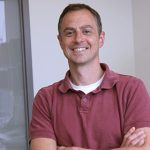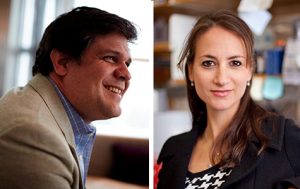The SWCRF Institute Without Walls™ is a network that connects more than 50 research laboratories directed by the brightest scientific minds who are collaborating throughout North America, Asia, and Europe. By working together to share their expertise along with their most recent findings, our investigators accelerate the pace toward research breakthroughs.
For a listing of the public and private organizations currently part of our Institute Without Wall, please visit: https://www.waxmancancer.org/our-research/partners-collaborations/
HIGHLIGHTS OF THE PROGRAM TO DATE

William S. Gorin Memorial Research Program for Pancreatic Cancer
 SWCRF-funded investigator Nabeel Bardeesy, Ph.D., Associate Professor of Medicine at Harvard Medical School, and Assistant Geneticist at the Center for Cancer Research, is leading an innovative approach to pancreatic cancer, a difficult cancer to detect early.
SWCRF-funded investigator Nabeel Bardeesy, Ph.D., Associate Professor of Medicine at Harvard Medical School, and Assistant Geneticist at the Center for Cancer Research, is leading an innovative approach to pancreatic cancer, a difficult cancer to detect early.
UNCOVERING PROTEINS THAT COULD MAKE GLIOBLASTOMA VULNERABLE TO THERAPY
William Weiss, M.D., Ph.D. and Kevan Shokat, Ph.D. at the Helen Diller Family Comprehensive Cancer Center at the University of California, San Francisco received funding from the SWCRF Institute Without Walls™ to study glioblastoma, the most common primary brain tumor that is currently incurable.
The SWCRF funding paired Dr. Weiss who specializes in pediatric neurology with Dr. Shokat who is a cellular and molecular pharmacologist to identify cell proteins that could be targeted by therapeutic intervention. Glioblastoma tumor cells are particularly aggressive and often grow and spread rapidly while resisting most current forms of treatments.
The research performed by Drs. Weiss and Shokat found how cancer cell proteins respond to other genetic factors to facilitate growth and tested various pharmaceutical interventions. The results of their work has led to at least one clinical trial with others expected in the coming months.
STUDYING DORMANCY IN DISSEMINATED TUMOR CELLS
